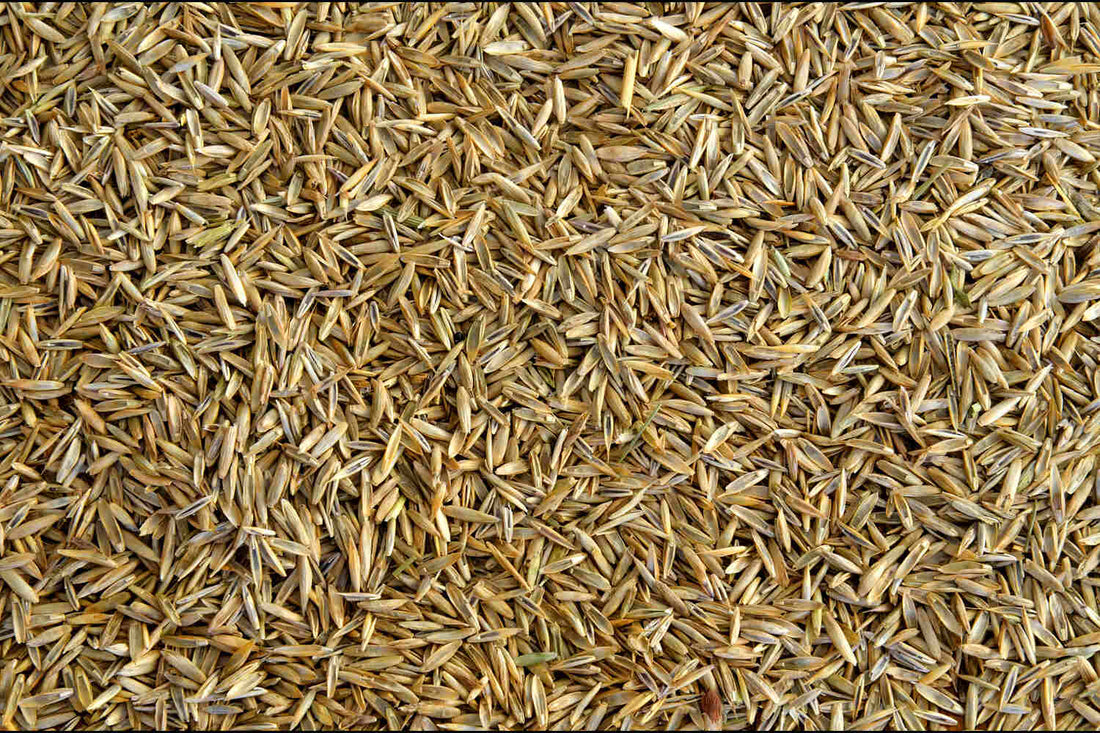Planting new grass seed can be an exciting yet daunting task, especially if you're not sure when to fertilize new grass seed.
As lawn care experts, we know that timing your fertilization is one of the most critical steps to establishing a healthy, lush lawn. If you're wondering when to fertilize new grass seed, you've come to the right place.
In this article, we'll dive deeper into the best times and methods for fertilizing your new grass seed to ensure optimal growth and a vibrant lawn.
From choosing the right starter fertilizer to understanding the best application times before and after seeding, we'll cover all the essential steps.
So, if you're ready to transform your lawn and achieve the best results, continue reading.
What this article covers:Choose a Starter Fertilizer
When you are preparing to plant new grass seed, selecting the right starter fertilizer is crucial. A starter fertilizer is specially formulated to provide the necessary nutrients that new grass needs to germinate and grow strong roots, such as our Starter Fertilizer 15-20-10 Plus Iron.
Nitrogen promotes healthy leaf growth, phosphorus is essential for strong root development, and potassium enhances the overall health and disease resistance of the grass.
This balanced mix helps the grass develop quickly and establishes a solid foundation for future growth. Ensuring your grass has the right nutrients from the start is key to achieving a lush and vibrant lawn.
Can You Fertilize New Grass Before and After Seeding?
Yes, you can and should fertilize new grass both before and after seeding. Here's how to do it effectively.
Before Seeding
Before planting your grass seed, it's beneficial to apply a starter fertilizer to the soil. This pre-seeding application ensures that the nutrients are readily available to the seeds as they begin to germinate.
Spread the fertilizer evenly over the prepared soil, then lightly rake it in to incorporate it into the top layer.
Using a starter fertilizer that contains a balanced mix of nitrogen, phosphorus, and potassium helps create an optimal environment for seed germination.
This mix promotes strong root development and supports the early growth stages of the grass.
Preparing the soil with the right nutrients is a crucial step in achieving a healthy lawn from the very beginning.
After Seeding
Once you’ve planted your grass seed, follow up with an application of 20-0-10 fertilizer. This second application should be done 4 to 6 weeks after to mature young seedlings.
Water the area thoroughly after applying the fertilizer to help it soak into the soil and reach the roots. Regular fertilization after seeding is essential for maintaining nutrient availability as the grass matures.
By providing consistent nutrition, you support the grass in developing a robust root system and vibrant green blades.
Ensuring the new grass receives adequate water after fertilizing is vital for the nutrients to penetrate the soil effectively and nourish the young plants.
Following these steps will help you achieve a thriving lawn that stands out for its health and beauty.

When to Fertilize
Timing is everything when it comes to fertilizing new grass seed. Let's look at the ideal times to fertilize before and after seeding:
Before Seeding
Apply the starter fertilizer immediately before planting your grass seed. This timing ensures that the nutrients are in place when the seeds begin to germinate.
Spread the fertilizer evenly over the prepared soil, and lightly rake it in to incorporate it into the top layer.
This method ensures that the nutrients are accessible right where the seeds need them most, promoting optimal germination and early growth. By preparing the soil with a starter fertilizer, you set the stage for a lush, healthy lawn.
After Seeding
The first follow-up fertilization should occur about 4-6 weeks after the grass has germinated. This timing helps sustain the growth and gives the young grass the boost it needs to establish itself.
Applying a balanced fertilizer during this period ensures that the grass continues to receive essential nutrients as it matures. Water the area thoroughly after applying the fertilizer to help it soak into the soil and reach the roots.
This follow-up fertilization supports ongoing development, strengthens the grass, and enhances its resilience.
By maintaining a consistent fertilization schedule, you ensure that your lawn remains healthy and vibrant as it continues to grow.

Fertilizing In Spring
Spring is an excellent time to fertilize new grass, as the warming soil and increasing sunlight create ideal conditions for growth. From our experience, applying lawn fertilizer in early spring can help jump-start the lawn’s development. Be sure to apply a pre-emergent fertilizer to prevent weeds from germinating.
The best time to start fertilizing your lawn in spring is early and late spring, as this ensures the soil has warmed up sufficiently to support active growth. The first application of pre-emergent should be applied before soil temperatures reach 55 degrees.
The initial application of fertilizer should be timed when the grass begins to grow and the temperatures are consistently mild.
This early fertilization provides essential nutrients that promote robust root development and healthy blade growth, setting the stage for a lush, green lawn throughout the growing season.
By knowing the best time to fertilize lawn in spring, you can also help discourage weed growth and maintain the overall health of your grass.
Ensuring your lawn gets the nutrients it needs during this critical period is key to achieving a beautiful and thriving lawn.
Conclusion
Achieving a lush, green lawn begins with understanding when to fertilize new grass seed. Timing is everything, and by choosing the right starter fertilizer and applying it at the optimal moments, you give your grass the best chance to thrive.
At Lawn Synergy, we are dedicated to providing you with the expertise and products you need to create the lawn of your dreams.
Ready to transform your yard into a beautiful, healthy oasis? Visit Lawn Synergy for more expert tips and advice, and take the first step towards your perfect lawn today. Whether you're wondering “how often do you fertilize grass”, “when to weed and feed lawns” or “when is it too cold to fertilize lawn”, we've got you covered!
If you want to learn more, why not check out these articles below:
- When to Fertilize Centipede Grass
- When to Fertilize St Augustine Grass
- When to Seed and Fertilize Lawn
- Is Lawn Fertilizer Toxic?
- Is It Ok to Fertilize Lawn in Hot Weather
- Can You Fertilize Dormant Grass
- Germination of Grass Seed
- How Does Grass Grow?
- How Much Fertilizer for Lawn?
- Will Fertilizer Kill New Grass?
- How Long Does Lawn Fertilizer Take to Work?
- How to Grow Bermuda Grass
- How to Grow Grass an a Slope
- How to Grow Grass in AZ
- Best Fall Lawn Fertilizer


